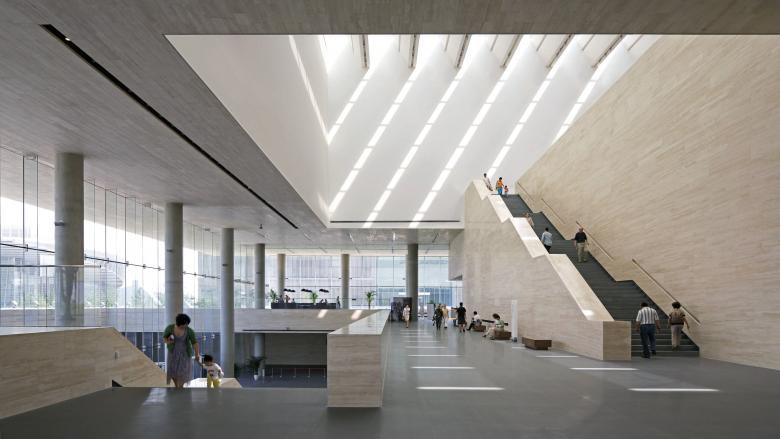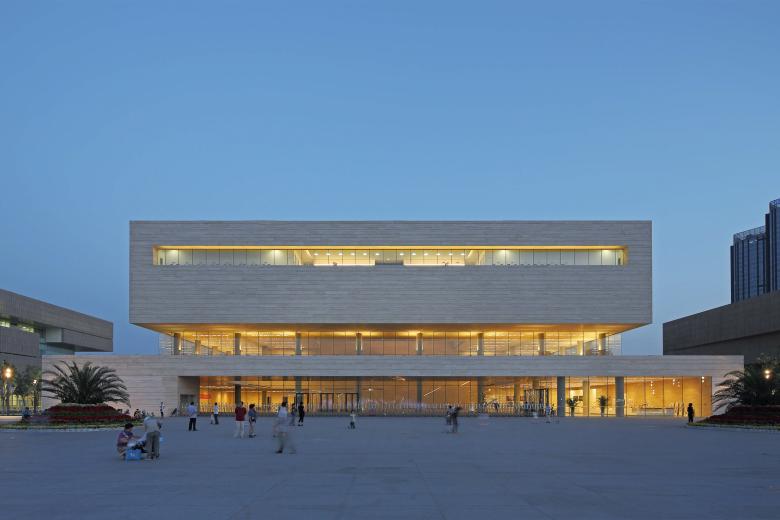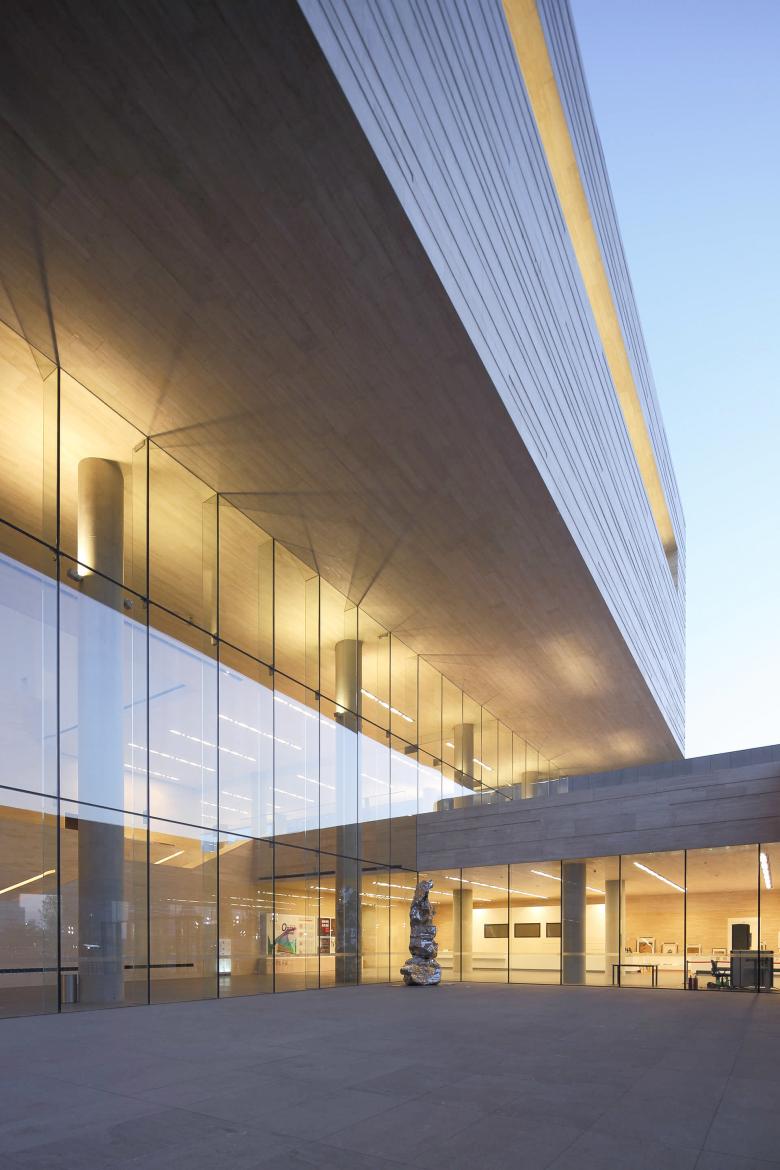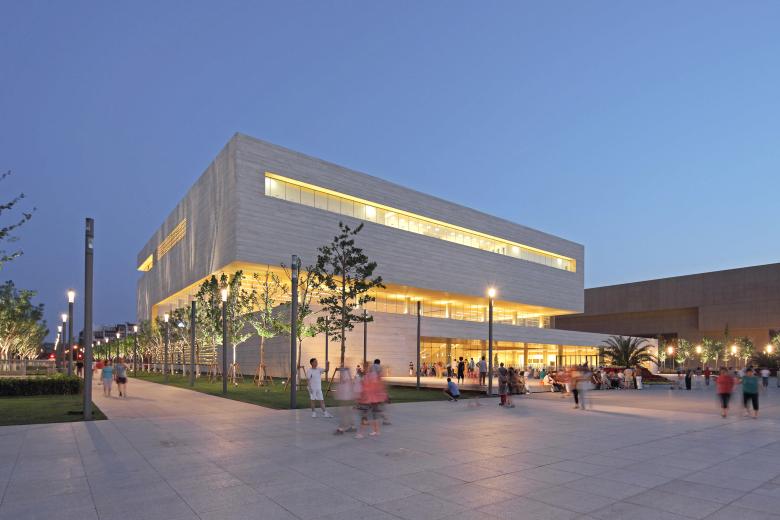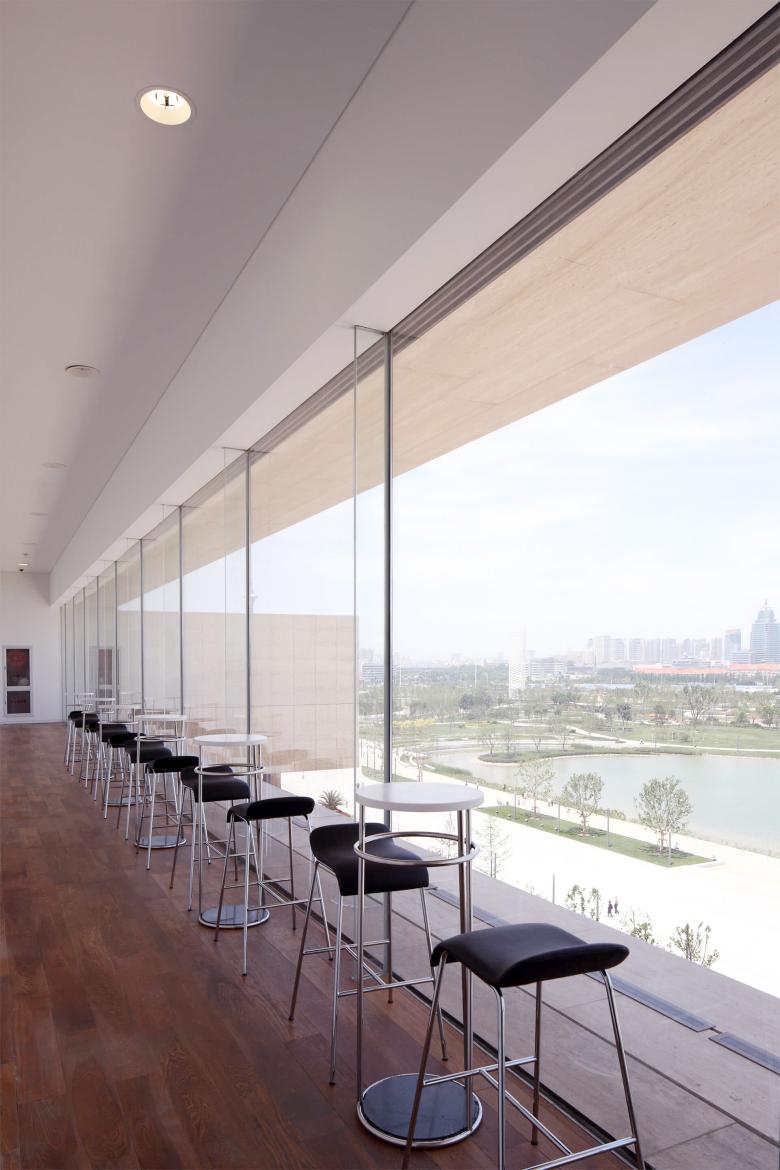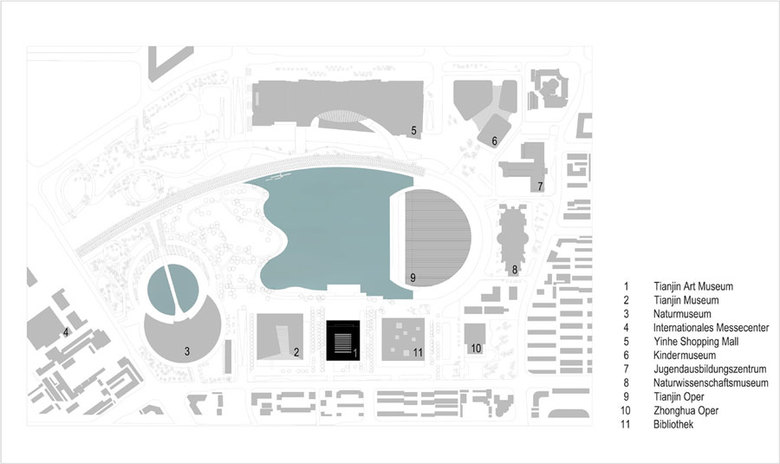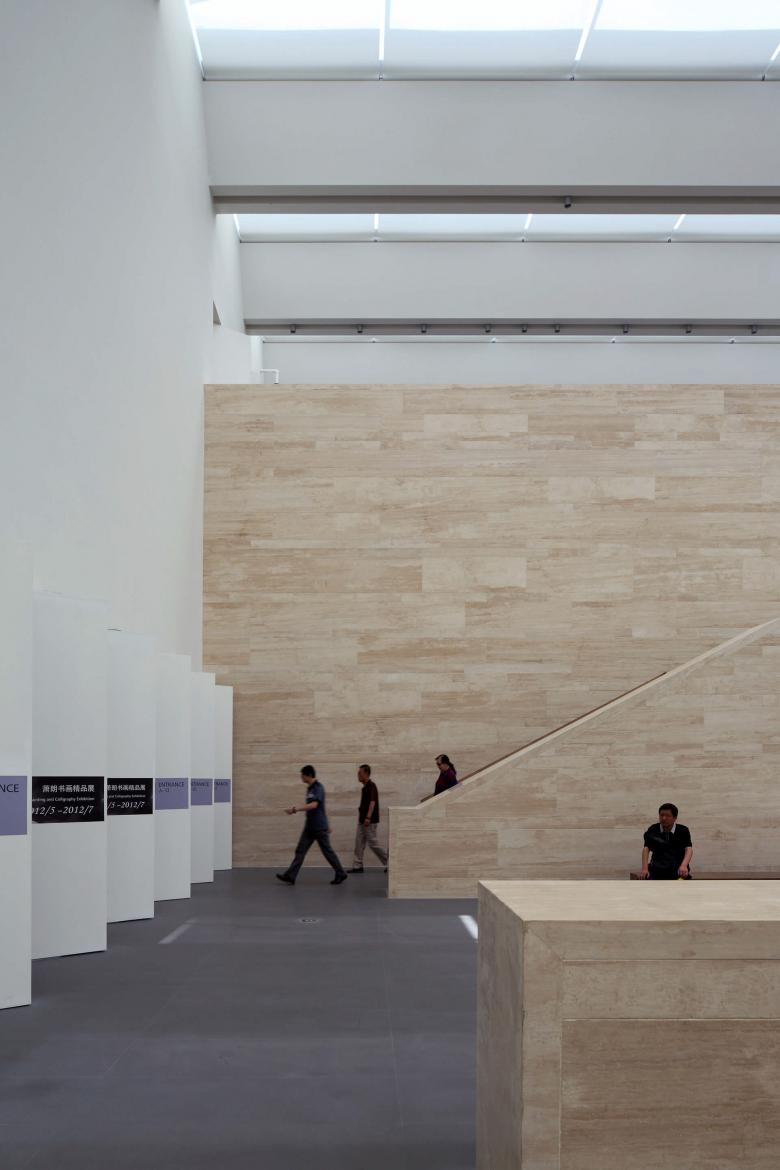Tianjin Art Museum
Back to Projects list- Location
- Tianjin
- Year
- 2012
- Client
- Tianjin Command Key Projects | Bureau of Urban Planning - Tianjin
The Tianjin Art Museum, which in April 2009 took first prize in an international competition, has space to house four permanent exhibitions. In addition to rooms for Chinese calligraphy, western art, sculpture, and modern art, there are also galleries in which changing exhibitions can be presented. Together with three additional cultural facilities (a library, an opera house and another new museum) the new exhibition center forms part of a 90-hectare culture and leisure time development in the Hexi district of Tianjin. This new quarter is dominated by an extensive area of greenery boasting a lake. In the row of striking exhibition and cultural edifices, the art museum is located on the lakeside promenade, which its visible side and main entrance overlook. The new buildings used for cultural purposes face the road, i.e., in the direction of the city, thereby creating a harmonious overall impression.
In front of Tianjin Art Museum the promenade expands to form a plaza, from where visitors are guided via the pedestal storey to the museum’s interior. A museum shop with floor-to-ceiling glass opens onto the entrance courtyard and forecourt. This special entrance creates a close link between the museum’s interior and exterior. At the same time it represents a transition from the lakeside promenade to inside the four-storey exhibition building with its gross surface area totaling 33,000 square meters.
An imposing entrance hall some 14 meters in height extends across the entire width of the museum and welcomes the visitors on the ground floor. In addition to the entrance hall this level also houses the museum shop, rooms for the museum’s collection and archive, administration rooms, a conference area, an educational section with child care, an approx. 500 square meter special exhibition section, as well as the VIP area with separate access for special guests.
In terms of spatial structure the museum is reminiscent of a solid stone cube with precise indentations, cut-outs and hollow spaces. All the exhibition rooms, artists’ studio, a restoration room which only visitors can look into, the library , as well as conference and meeting rooms are housed in the solid part of the monolithic structure. The cascade-shaped sequence of stairs and landings leading to the exhibition rooms on the upper storeys seem to have been hewn from this solid slab of stone. This access area, which skylights in the central atrium flood with natural daylight, not only creates interesting spatial references, but also enables a wide range of different views and makes it easier for visitors to find their way around the exhibition building.
Furthermore, large glass facades provide gorgeous views of the lake and the adjoining park. These vistas, which in particular on the ground and first floors dominate the spatial experience, also forge a link between enjoying art and experiencing nature.
Eight meters in height, the first floor boasts a 1,000 square meter exhibition room and flexible exhibition space measuring around 650 square meters, thus offering diverse opportunities for presenting art. This main exhibition level can be reached via the entrance hall from the park as well as via an entrance from the road, which is why there is another entrance with an information stand here.
The, if anything, introverted exhibition rooms, which are accessible from the stairs, as well as the exhibition areas on the third and fourth floors, on which the rooms are grouped in a circle around the central atrium, create ideal conditions for concentrated viewing of the works of art on display.
With its horizontal layering the natural stone facade made of travertine conceals the different heights of the storeys in the new museum building. The appearance of the almost 30-meter high, sculptural edifice is structured by indentations and areas of glass alone. In addition, the facade features stone lamellas, which filter the natural daylight and protect the rooms behind from direct sunlight. The natural stone facade cloaks a cutting-edge steel construction with a regular grid of columns and two vertical access cores. The loads of the two upper exhibition levels, which appear to project, weightless, over the entrance hall, are likewise transferred to the foundations by means of reinforced concrete columns.
Competition
04/2009, 1st prize
Site
29.800 sqm
GFA
33.030 sqm
